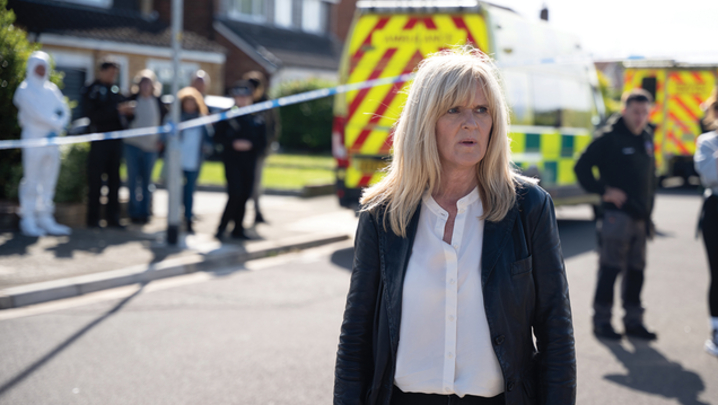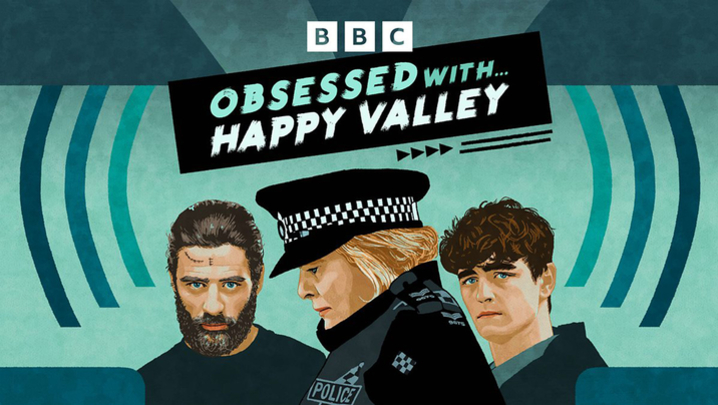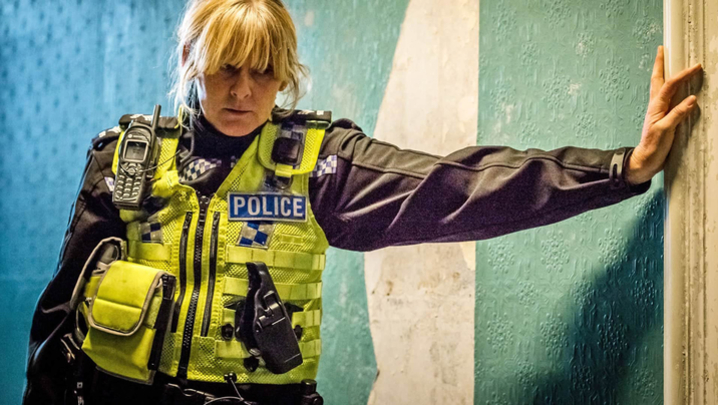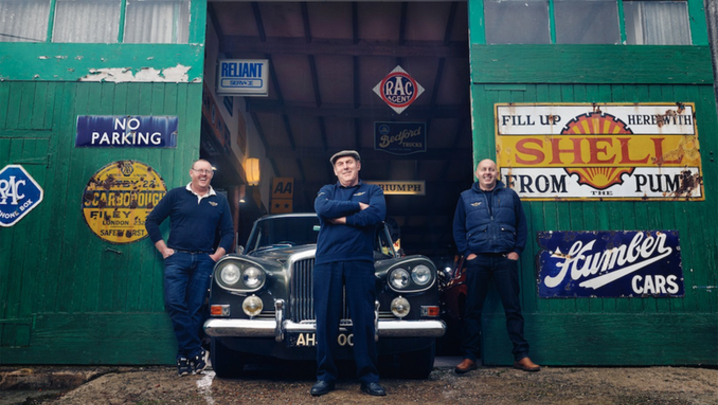Carole Solazzo suggests television’s love affair with Yorkshire has not yet run its course.
Eighteen months ago, like James Herriot dolloping piccalilli on to Farmer Horner’s swiftly replenished plates of fat bacon, television decided that you can have too much of a good thing.
At the 2021 Edinburgh TV Festival, Channel 5 commissioning editor Daniel Pearl declared that he wouldn’t make “another programme about Yorkshire”. Ben Frow, the broadcaster’s content supremo, has recently followed that by announcing a reality-heavy slate, replete with a Tim Peake-fronted show exploring space.
Channel 5 may be relocating from God’s own county to galaxies far, far away, but is TV’s love affair with Yorkshire really over? And how did it ever seem like a match made in Heaven?
“What Yorkshire does well is that big, warm hug,” says Yorkshireman – and Ralph & Katie director – Jordan Hogg. “All Creatures Great and Small, for example, shows the best of what the county is. It has that strong, comforting draw.”
Lancastrian cinematographer Liam Healey agrees: “Programme-makers use Yorkshire and the North as a way of harking back to older, simpler times.”
This nostalgic, escapist outlook was understandably more prevalent during the pandemic, when Channel 5 made big gains in audience viewing figures. During this time, Cy Chadwick’s Leeds-based indie, Atypical, produced episodes of the BBC’s walking show Winter Walks, many set in Yorkshire.
Though the producer has filmed walks in the South, as well as in Northumberland, Cumbria, Lancashire and Derbyshire, “we filmed many of our programmes during national lockdowns – therefore, the safest and most practical way to film these was to focus on walks close to the base,” says Chadwick.
The resulting shows are comforting, beautiful and sometimes inspirational. Top of cinematographer Andy McDonnell’s list of Yorkshire’s virtues is the landscape. Astonishingly, “Yorkshire is twice the size of Wales, with the population of Scotland. It has vastness and variation: the dales, the barren moors, the wolds, the rugged coastline;… urban Leeds… and York if you want an older town look.”
Healey would love to film on Malham Cove, with its craggy limestone pavement. “Filming that at sunrise or sunset, it would look ethereal.… In Lancashire, as well as Yorkshire, you get a warm sunlight on the hills and moors and peaks. It’s very sepia. Sometimes, [in a drama] colour can be distracting so, when you get that shot, it’s a lovely way of getting a more monochrome look, but really natural.”
For Lisa Holdsworth, writer, Chair of RTS Yorkshire and proud Yorkshirewoman, the reasons for filming in Yorkshire are twofold: “It’s what we’ve got in terms of natural resources, which is obviously the amazing countryside.… Then there’s the practical side of it: we have a really good production base. YTV – now ITV Yorkshire – was based up here, and the BBC had a strong foothold in Leeds. Which meant that many of those journalists and producers went on to set up their own indies, giving rise to a strong independent sector.”
Hogg has reservations, though: “There’s lots of great talent and crew in Yorkshire, [but] what Yorkshire has been lacking is good film-making infrastructure. Manchester has dedicated studio space and [Salford has] the MediaCity UK studios. But, in Yorkshire, there are no studios of top standard.” He believes quality studio space is essential in order “to grow new talent”.
McDonnell has worked as director of photography on both sides of the border on shows such as Happy Valley, Shameless, Last Tango in Halifax and Blue Murder. He concedes that Lancashire and Greater Manchester are “very similar to Yorkshire. They share the Pennines, and both have the countryside, the hills and the moorland.” But what Yorkshire has over neighbours Lancashire and Greater Manchester, as Anna Izza of Marketing Lancashire also acknowledges, is “a well-established screen agency, one of just a handful in the UK, which is advantageous”.
Holdsworth has nothing but praise for Screen Yorkshire. “It is not backwards at coming forwards,” she says. “None of that, ‘We’ll double as somewhere in London’. It is: ‘Yorkshire is amazing. Centre it. Make it the star of your show.’”
Screen Yorkshire has promoted the county internationally, and “that’s been reflected in getting the really big productions here, which keeps that skillset going,” she argues. “We’ve got crews working for a week or so on a Disney or Marvel production, who are then around to work on our own home-grown dramas.”
Put that together with a “very media- and cultural industries-friendly council in Leeds… and the people of Yorkshire who are up for it”, and clearly you have a winning synergy.
But why would two London-born writers set their new BBC One drama, Better, in Leeds? For Sam Vincent, it was about believability. Setting a show with gangsters in London “comes with a lot of tropes. The ‘cockney gangster’ is a well-trodden path.” Whereas, “if you portray a place with accuracy, detail and truth… the drama feels rooted in the real world… and your story works. We’re big believers in the old cliché ‘the more specific you are, the more universal you are’.”
Sally Wainwright, writer of Happy Valley, which garnered an extraordinary 11 million viewers for the much-anticipated finale, concurs absolutely. In a BBC Newsnight interview, she told Kirsty Wark: “It was never a conscious decision to set so many dramas in the North.… Authenticity is really important to me… and you can be more explicit about emotions if you’re using authentic language – and, of course, the language that is most authentic to oneself is the language one grew up with.”
But Wainwright goes further, using the Yorkshire landscape as a vital character. Juxtaposing the beauty of the valley with the brutality of Tommy Lee Royce, the Calder Valley becomes an antagonist, a ravine that traps the young people who live there, Royce included. “He’s the sort that thinks Manchester is abroad.… He’s like a rat, he’ll never be more than three feet away,” Catherine tells her sister, Clare, when Royce is initially released from prison.
The valley trapped Catherine’s daughter, Becky, when she fell under Royce’s control and the spell of the drugs he dealt her, just as it traps the self-medicating, alienated working-class young people in Jez Lewis’s stunning, soul-stirring 2009 documentary, Shed Your Tears and Walk Away – Wainwright’s inspiration for Happy Valley.
Significantly, Becky’s grave is not in Hebden Bridge but up in Heptonstall, where Sylvia Plath is buried and the closest place in Calderdale to heaven.
It’s young working-class people who concern industry professionals such as McDonnell and Holdsworth. A chronic problem is the difficulty of local travel. “One of the few things [the Yorkshire countryside] suffers from is a lack of public transport,” says McDonnell. “Having spoken to young people wanting to work in our industry, getting around without a car is nigh-on impossible.”
There are other issues, too. “You can have Marvel filming down the road from your house, but,” worries Holdsworth, “can you be the person who becomes a star in the film?”
Her new Channel 4 series, Dance School, deals with working-class kids’ access to culture: “We do need to talk about inequality.” Dance School has just begun street-casting. “And working class doesn’t mean just white. We have so much diversity in Leeds,” she adds.
With Dance School due to start shooting in Leeds in April, and new BBC factual medical documentary Saving Lives in Leeds set to air this month, perhaps word of television’s split from Yorkshire comes too soon?







